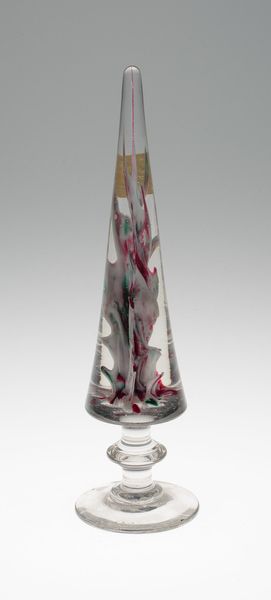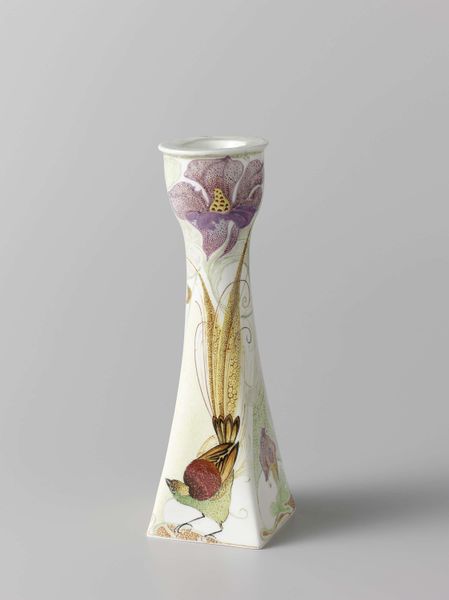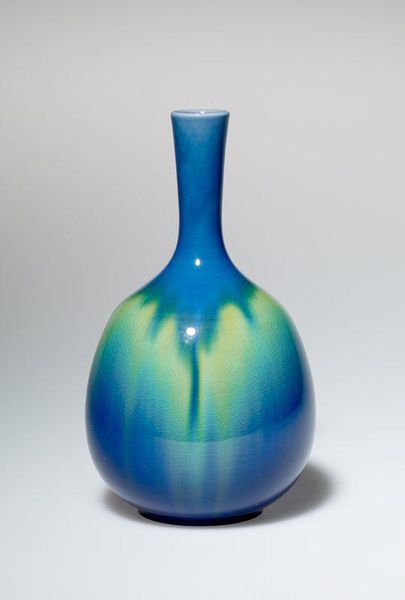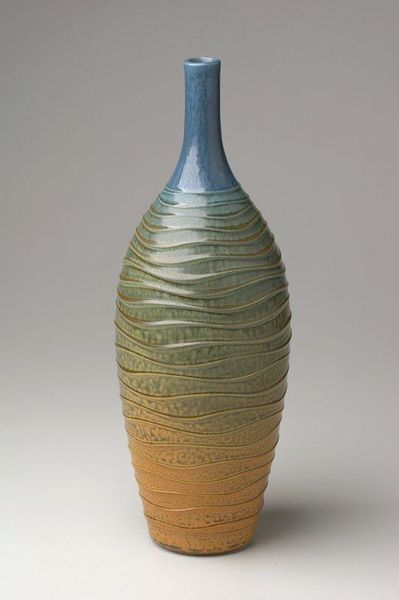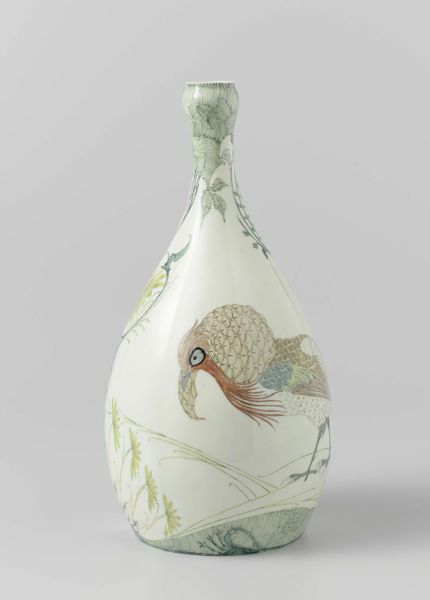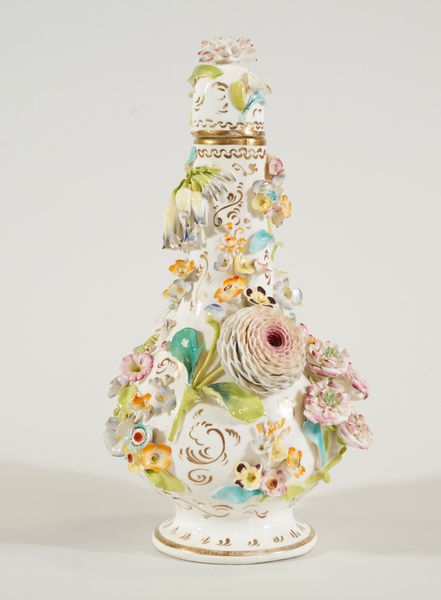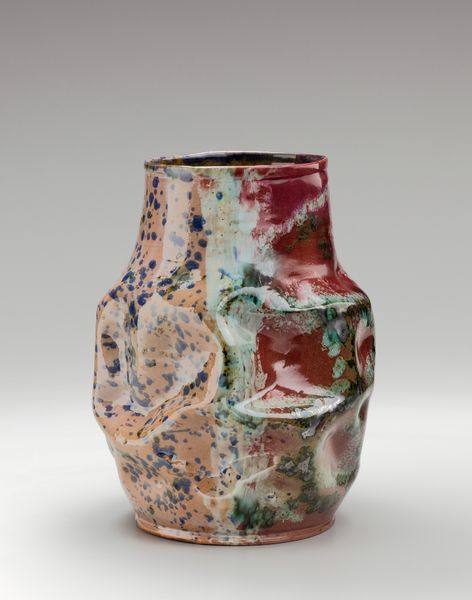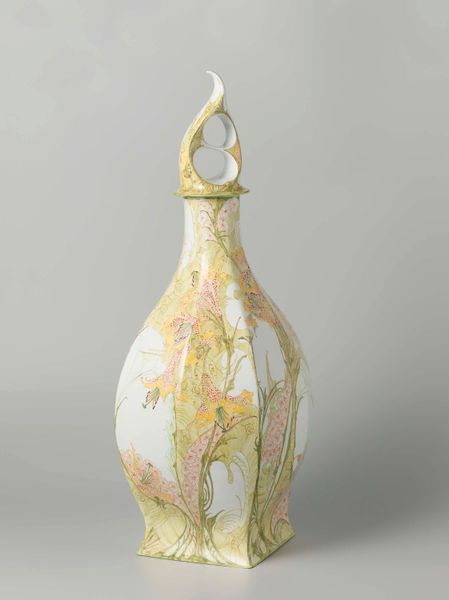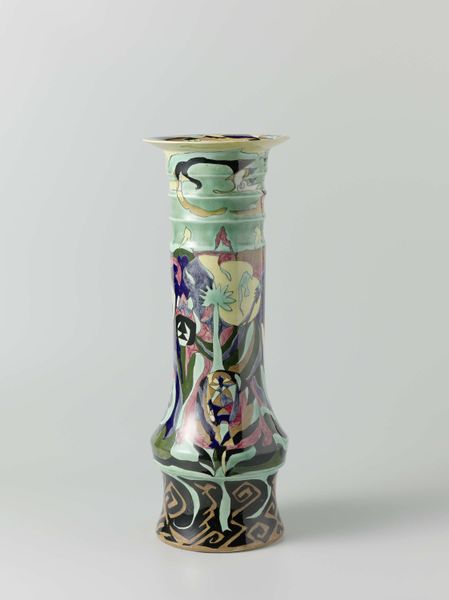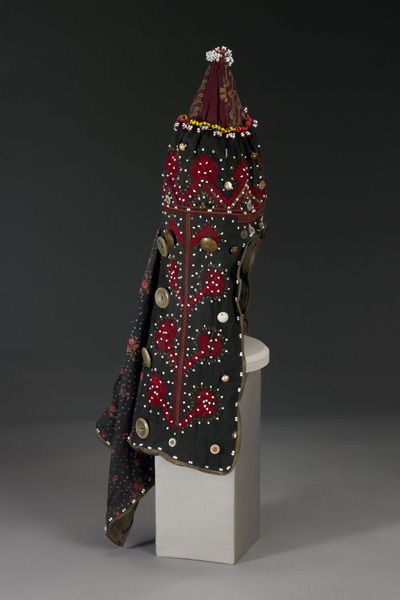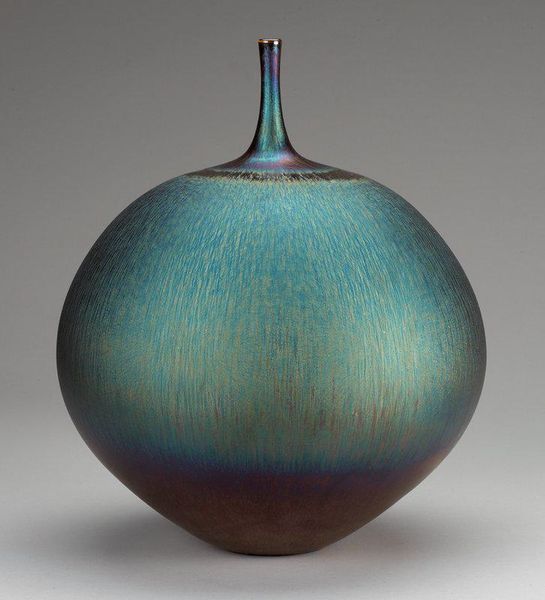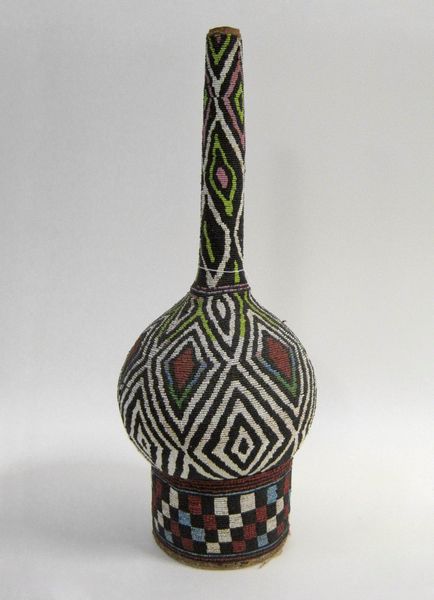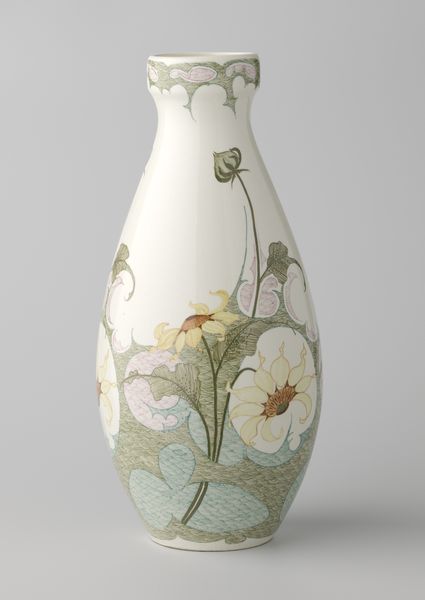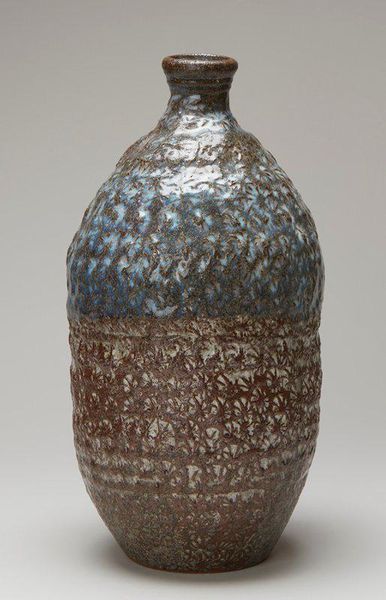
glass
#
vase
#
glass
#
decorative-art
Dimensions: 14 3/8 x 5 1/8 x 5 1/4 in. (36.51 x 13.02 x 13.34 cm)
Copyright: No Known Copyright
Curator: This "Patchwork Vase," created around 1950 by A.V.E.M. (Arte Vetraria Muranese), resides here at the Minneapolis Institute of Art. It’s an intriguing example of mid-century Murano glasswork. Editor: Wow, it's like a kaleidoscope in glass! So many colors and patterns colliding… feels chaotic, yet somehow… delightful? Like a joyous explosion frozen in time. I wonder what it would feel like to hold. Smooth, I imagine. Curator: Its composition begs the question: What inspired this textile-like design in glass? One perspective suggests that post-war Murano glassmakers looked to revive and innovate, experimenting freely. How do social recoveries enable artistic liberation? Editor: Liberation, yes! I picture the artist, perhaps a bit madcap, piecing together memories, emotions... turning them into vibrant confetti. Glassblowing as radical joy. Makes me want to break the rules, too. I'd love to drink champagne out of this. Curator: These makers skillfully blended techniques; the patchwork design utilizes canes and murrine—glass rods and patterned cross-sections—fused into one harmonious whole. There’s complexity that belies what at first seems like decorative chaos. Does this hint at hidden narratives or deeper socio-cultural meaning beyond the merely aesthetic? Editor: Deeper meaning? Hmmm… maybe. Or maybe it’s simply the maker playing, unburdened by weighty artistic statements! Sometimes joy is the message. Besides, it stands proudly against the strict designs of Bauhaus and embraces a bold rebellion. Curator: An interesting counterpoint, though considering A.V.E.M.’s position within Murano’s artisan culture, we could examine how tradition interacts with innovation and consider which societal segments dictated creative pursuits during the post-war era. Editor: You always bring up great questions, don't you? Well, either way, looking at it fills me with optimism and it's given me inspiration! Curator: And for me, renewed perspectives on context. Thank you.
Comments
minneapolisinstituteofart about 2 years ago
⋮
Art glass has been made in Murano (a chain of small islands in the Venetian lagoon) for centuries. From at least the 9th century, Murano held a reputation as innovators in glass design, decoration, and technique and as an international center of glass production. By the late 19th century, copies of 16th, 17th, and 18th century styles were still beautiful and still sought after, but increasingly seemed to be examples of artistic stagnation.In the early twentieth century, Murano glass artists broke away from the traditional style and incorporated aspects of the new philosophy of modernism. In 1932, when the workshop A.V.E.M. was founded, the modernist style had been influencing Murano glass for more than a decade. In the 1950s, the designers of A.V.E.M. created graphic, abstracted works like Patchwork Vase. Rods of twisted colored glass (the complex pattern is called zanfirico), arranged into squares, fused into a sheet and then rolled to form the body of the vessel, create blocks of modernist inspired pattern and mixes traditional techniques with a modernist ethos.
Join the conversation
Join millions of artists and users on Artera today and experience the ultimate creative platform.
